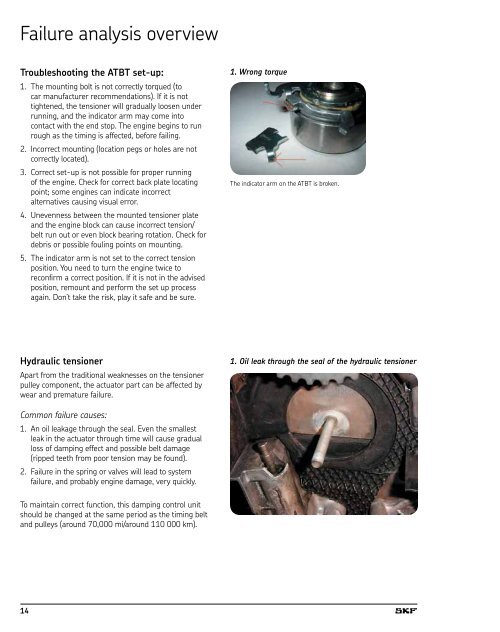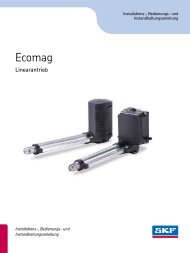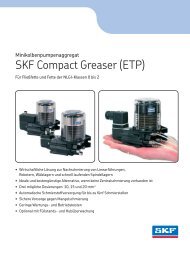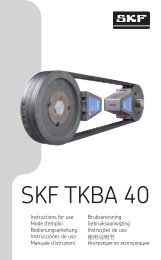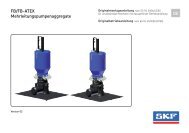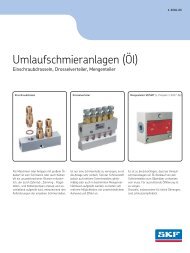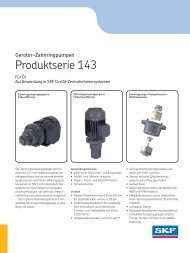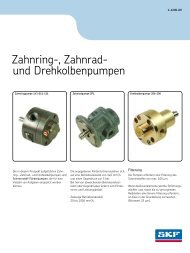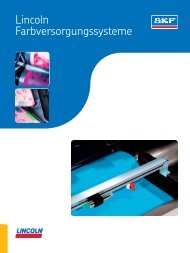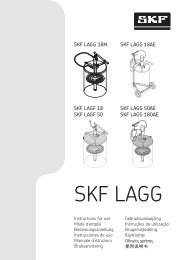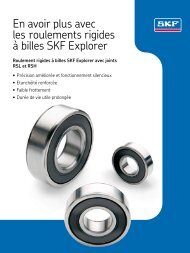SKF Timing Belt Kits - SKF.com
SKF Timing Belt Kits - SKF.com
SKF Timing Belt Kits - SKF.com
You also want an ePaper? Increase the reach of your titles
YUMPU automatically turns print PDFs into web optimized ePapers that Google loves.
Failure analysis overview<br />
Troubleshooting the ATBT set-up:<br />
1. The mounting bolt is not correctly torqued (to<br />
car manufacturer re<strong>com</strong>mendations). If it is not<br />
tightened, the tensioner will gradually loosen under<br />
running, and the indicator arm may <strong>com</strong>e into<br />
contact with the end stop. The engine begins to run<br />
rough as the timing is affected, before failing.<br />
2. Incorrect mounting (location pegs or holes are not<br />
correctly located).<br />
3. Correct set-up is not possible for proper running<br />
of the engine. Check for correct back plate locating<br />
point; some engines can indicate incorrect<br />
alternatives causing visual error.<br />
4. Unevenness between the mounted tensioner plate<br />
and the engine block can cause incorrect tension/<br />
belt run out or even block bearing rotation. Check for<br />
debris or possible fouling points on mounting.<br />
5. The indicator arm is not set to the correct tension<br />
position. You need to turn the engine twice to<br />
reconfirm a correct position. If it is not in the advised<br />
position, remount and perform the set up process<br />
again. Don’t take the risk, play it safe and be sure.<br />
Hydraulic tensioner<br />
Apart from the traditional weaknesses on the tensioner<br />
pulley <strong>com</strong>ponent, the actuator part can be affected by<br />
wear and premature failure.<br />
Common failure causes:<br />
1. An oil leakage through the seal. Even the smallest<br />
leak in the actuator through time will cause gradual<br />
loss of damping effect and possible belt damage<br />
(ripped teeth from poor tension may be found).<br />
2. Failure in the spring or valves will lead to system<br />
failure, and probably engine damage, very quickly.<br />
To maintain correct function, this damping control unit<br />
should be changed at the same period as the timing belt<br />
and pulleys (around 70,000 mi/around 110 000 km).<br />
14<br />
1. Wrong torque<br />
The indicator arm on the ATBT is broken.<br />
1. Oil leak through the seal of the hydraulic tensioner


